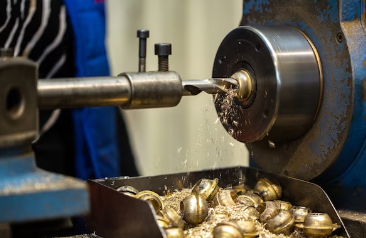Introduction
CNC machining is a widely used manufacturing process that involves the use of computer numerical control (CNC) machines to remove material from a workpiece to create a desired shape or design. This article will provide a comprehensive guide to the CNC machining process, covering various aspects and benefits of this technology.
1. Understanding CNC Machining
CNC machining is a subtractive manufacturing process that utilizes computer-aided design (CAD) models to guide the cutting tools and machinery. The process begins with the creation of a 3D model, which is then translated into a set of instructions that control the CNC machine's movement and operation. The machine cuts away excess material from the workpiece until the desired shape is achieved.
2. Advantages of CNC Machining
CNC machining offers numerous advantages over traditional manufacturing methods. Firstly, it allows for high precision and accuracy, ensuring consistent quality in the final product. The use of computer control also enables complex designs and intricate details to be easily replicated. Additionally, CNC machining is highly efficient and can be automated, resulting in faster production times and reduced labor costs.
3. Types of CNC Machines
There are various types of CNC machines, each designed for specific applications. Some common examples include CNC milling machines, CNC lathes, CNC routers, and CNC plasma cutters. Each machine operates using different cutting tools and techniques, catering to different material types and workpiece sizes.
4. CNC Machining Materials
CNC machining can work with a wide range of materials, including metals, plastics, and composites. Metals such as aluminum, steel, and titanium are commonly machined using CNC processes due to their strength and durability. Plastics like ABS and nylon are also popular choices. The choice of material depends on the specific requirements of the product being manufactured.
5. CNC Machining process Steps
The CNC machining process typically follows a set of steps. First, the design is created using CAD software to generate a 3D model. The model is then converted into G-code, which serves as the instructions for the CNC machine. The machine is set up, and the workpiece is secured. The CNC machine then performs the cutting and shaping operations according to the programmed instructions. Finally, the finished part is inspected for quality assurance.
6. Applications of CNC Machining
CNC machining finds applications in various industries, including aerospace, automotive, medical, and electronics. It is used to manufacture components such as engine parts, surgical instruments, circuit boards, and prototypes. The versatility and precision of CNC machining make it suitable for both large-scale production and custom one-off pieces.
7. Benefits for Prototyping
CNC machining is particularly beneficial for prototyping due to its ability to quickly produce accurate and functional prototypes. It allows designers to test and evaluate their designs before committing to mass production, saving time and cost. CNC prototyping also enables modifications and iterations to be easily made, ensuring the final product meets the desired specifications.
8. CNC Machining vs. 3D Printing
While 3D printing has gained popularity in recent years, CNC machining offers certain advantages over this additive manufacturing process. CNC machining produces parts with superior strength and durability, making it suitable for functional components. It also allows for a wider range of materials and finishes. However, 3D printing excels in creating complex geometries and intricate designs that may be challenging for CNC machining.
9. Considerations for CNC Machining
When utilizing CNC machining, there are several considerations to keep in mind. Material selection, tooling, and machining parameters must be carefully chosen to ensure optimal results. Additionally, proper maintenance and calibration of the CNC machine are essential to maintain accuracy and prolong its lifespan. Working with experienced CNC operators and programmers is crucial to achieving the desired outcomes.
10. Future Trends in CNC Machining
CNC machining continues to evolve with advancements in technology. One notable trend is the integration of artificial intelligence (AI) and machine learning algorithms into CNC machines, enhancing automation and optimization. Additionally, the development of hybrid machines that combine multiple manufacturing processes, such as CNC machining and additive manufacturing, shows promise in expanding the capabilities of CNC technology.

